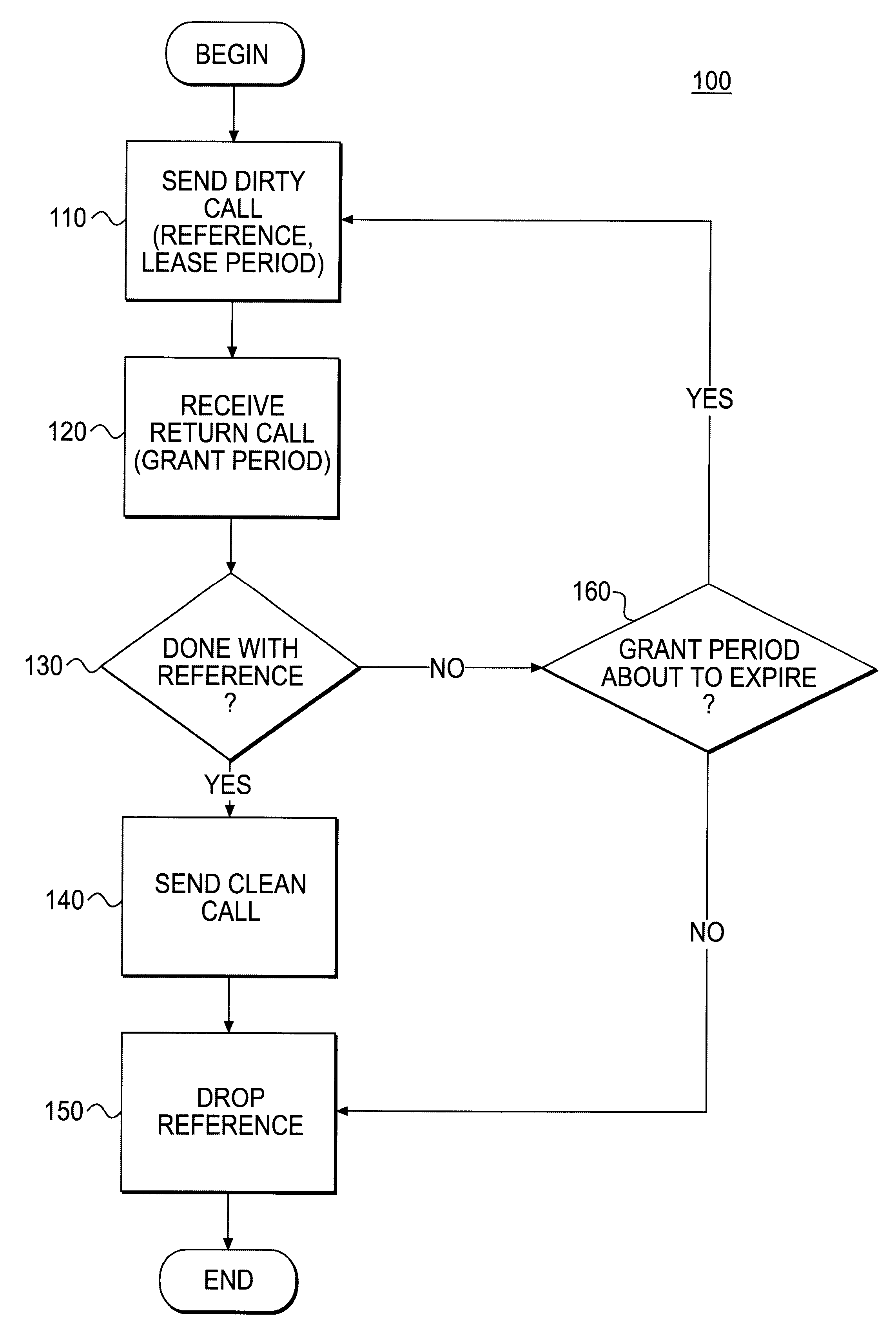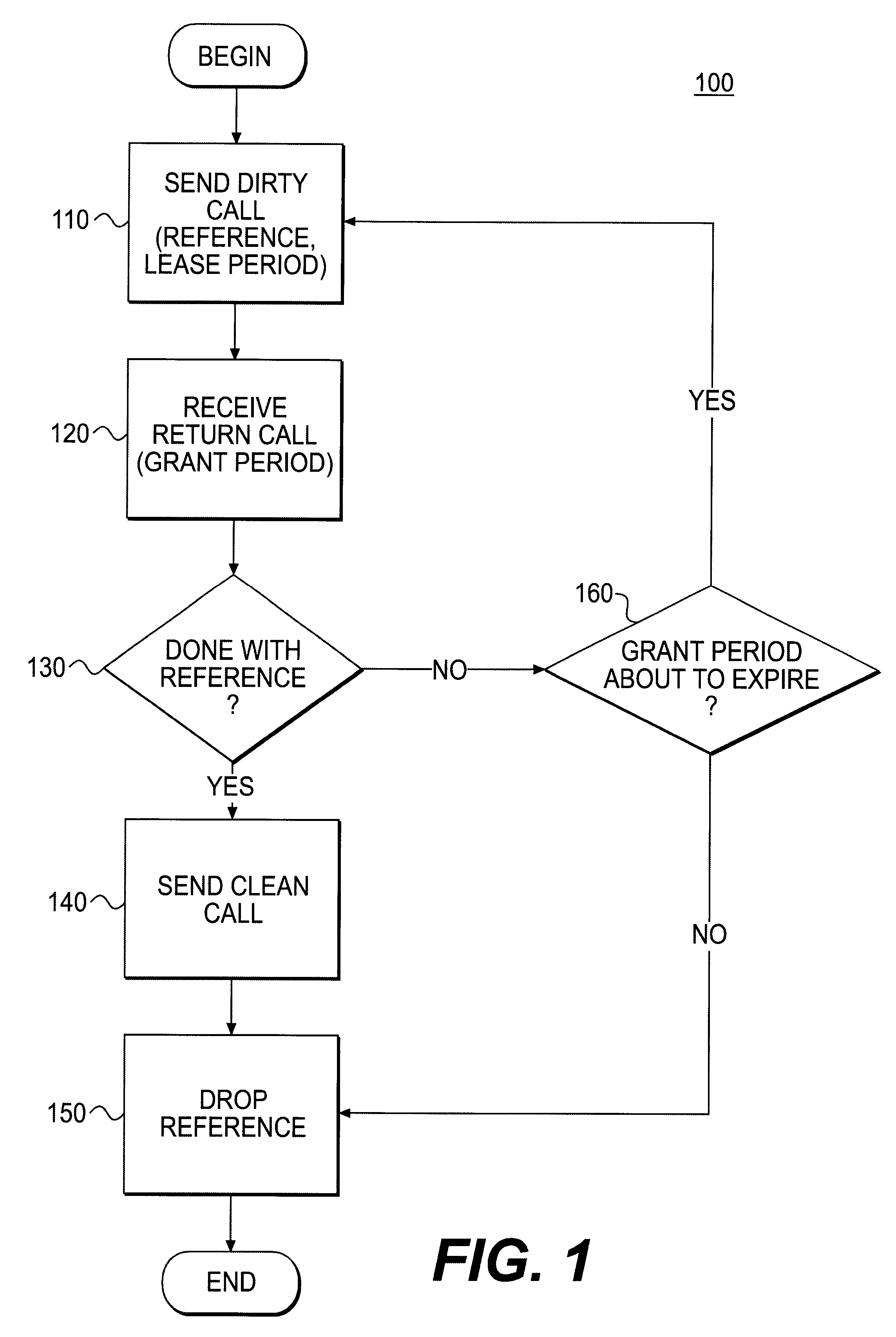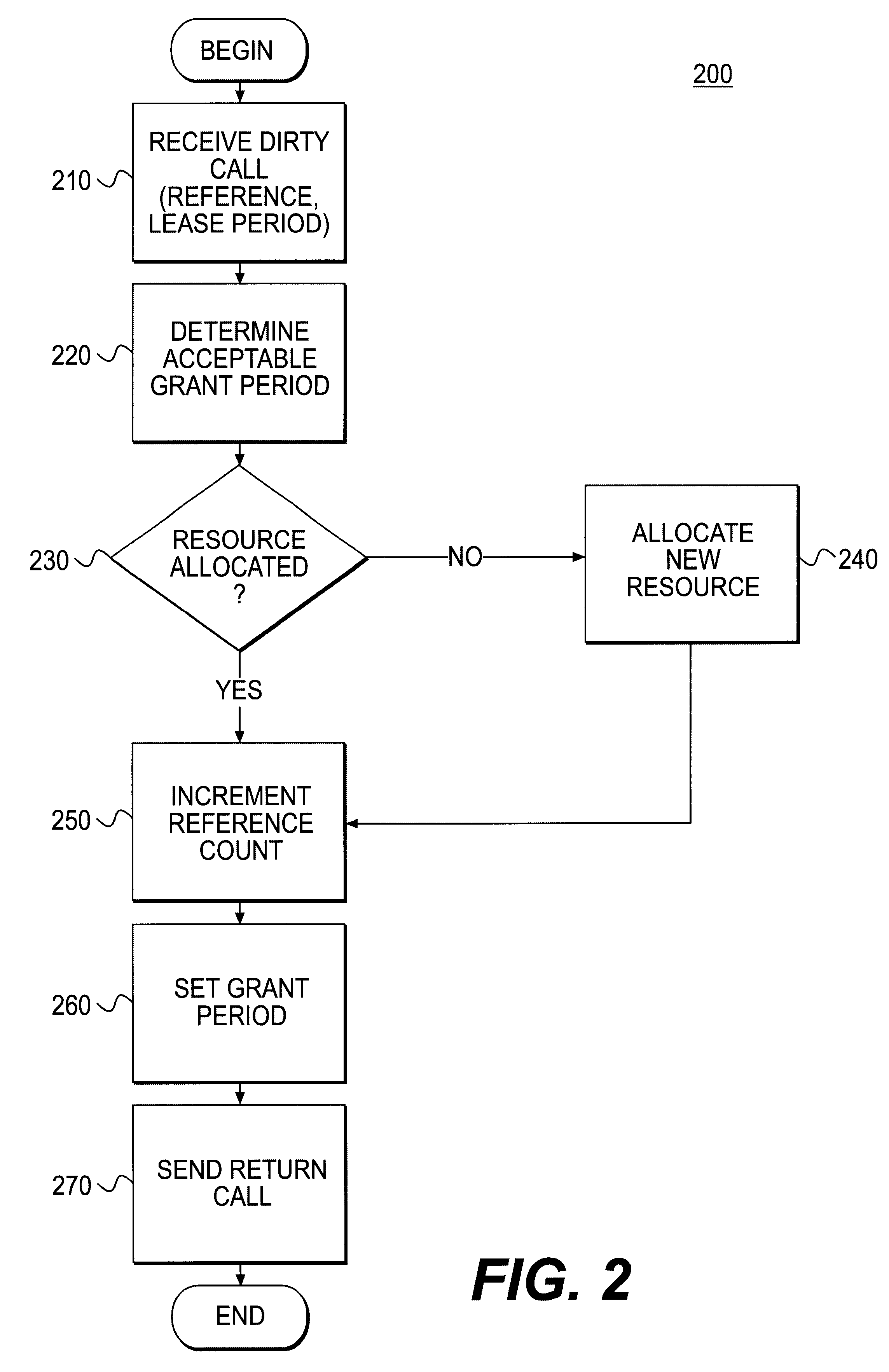Method, apparatus, and product for leasing of group membership in a distributed system
a distributed system and group membership technology, applied in the field of data processing systems, can solve the problems of reclaiming resources prematurely, improper and premature reclamation of resources, and affecting the performance of the distributed system,
- Summary
- Abstract
- Description
- Claims
- Application Information
AI Technical Summary
Problems solved by technology
Method used
Image
Examples
Embodiment Construction
The leasing technique, described above, relates to garbage collection. However, an alternative embodiment of the present invention, as described below, can be used to govern object membership in an activation group.
In a distributed system that utilizes the Java.TM. programming environment ("the exemplary distributed system"), objects contain methods that may be invoked remotely. These methods can be invoked by a client using the Java.TM. remote method invocation system (RMI), sold as part of the Java Software development kit, available from Sun Microsystems, Inc. of Mountain View, Calif. In the exemplary distributed system, when a client invokes a method on a remote object, the object may not already be in memory on the remote machine. In this case, a component of RMI, known as the activation daemon, on the remote machine starts a Java.TM. virtual machine (JVM) and then activates the object. The Java Virtual Machine is also provided as part of the Java software development kit and i...
PUM
 Login to View More
Login to View More Abstract
Description
Claims
Application Information
 Login to View More
Login to View More - R&D
- Intellectual Property
- Life Sciences
- Materials
- Tech Scout
- Unparalleled Data Quality
- Higher Quality Content
- 60% Fewer Hallucinations
Browse by: Latest US Patents, China's latest patents, Technical Efficacy Thesaurus, Application Domain, Technology Topic, Popular Technical Reports.
© 2025 PatSnap. All rights reserved.Legal|Privacy policy|Modern Slavery Act Transparency Statement|Sitemap|About US| Contact US: help@patsnap.com



